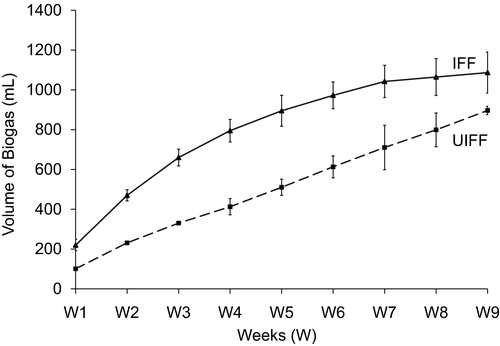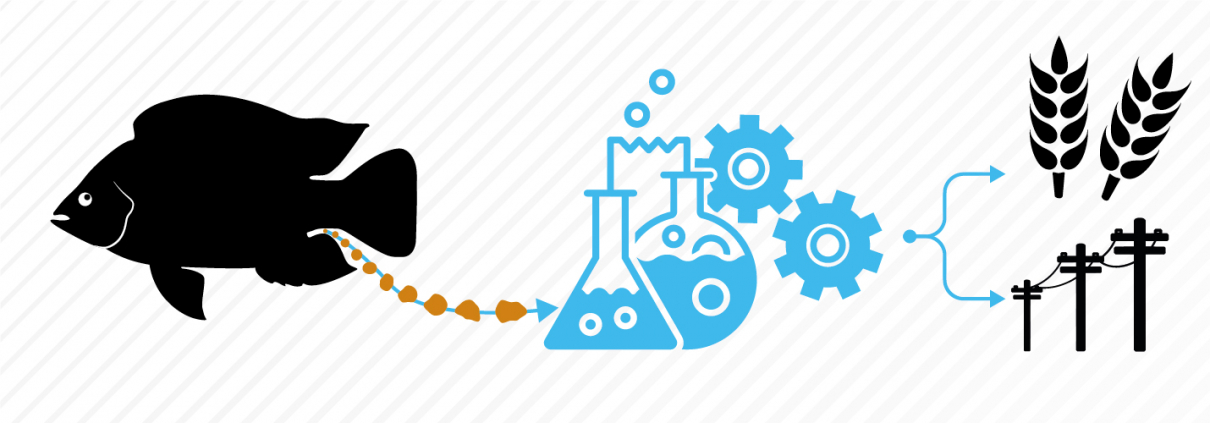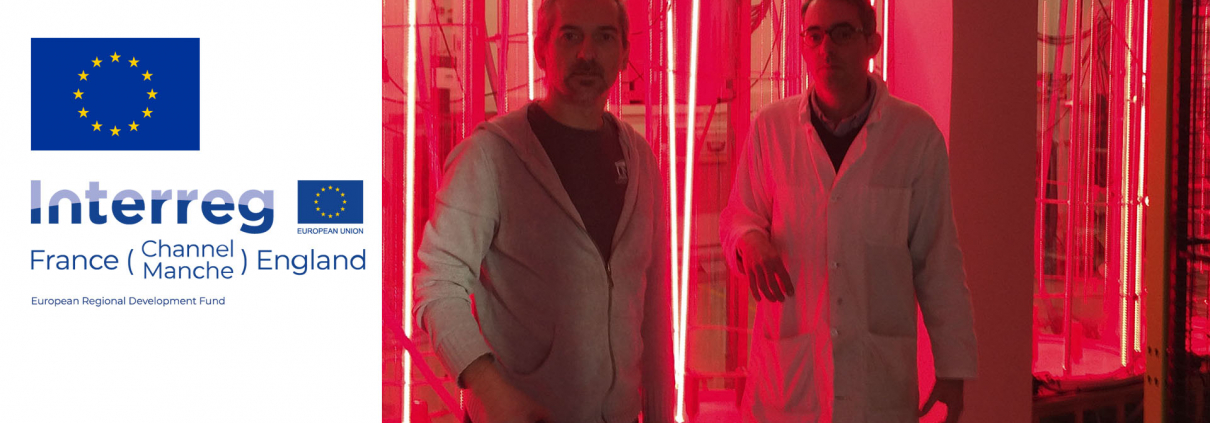Methanogenic and fertilizing potential of aquaculture waste :
towards freshwater farms energy self‐sufficiency in the framework of blue growth
The fisheries sector, particularly aquaculture, is a fundamental source of nutrition for humans, particularly in developing countries. The modern development of fish farming requires energy for production systems. This study investigates the potential of using organic wastes derived from fish fattening to produce on-farm energy through the process of methanization. Oreochromis niloticus faeces methanogen potential was determined with (IFF) and without (UIFF) methanizer microbial inoculum. At the end of the manure methanation trials, the resulting digestates were tested as organic fertilizers for agriculture. The tests showed that inoculated fish faeces had faster biogas kinetics production compared with uninoculated fish faeces. In both cases, the produced biogas contained more than 60% methane (CH4) from the second week of incubation, indicating that it was of good quality. Furthermore, the total CH4 volume was twice as larger in IFF compared with UIFF. Biofertilizer tests showed no significant differences for most of the growth parameters in onion and tomato when compared to the unfertilized control, except in one case for tomato plants, which significantly increased its aboveground biomass. The results show that fish faeces are good methanogenic substrates conducive to energy recovery that could facilitate farm autonomy; however, valorization of the digestates as biofertilizer still requires extensive agronomic optimization. Based on our results, we estimate that equivalents of energy need of almost ten millions of people could be covered using the aquaculture potential in freshwater fish faeces biogas worldwide or that at least aquaculture farm energy self-sufficiency could be fostered.

Biogas production of fish faeces
Biogas production of fish faeces was monitored using the standard BMP test. After 9 weeks, fish faeces produced more biogas with the inoculum (IFF = 1100 mL) than fish faeces without the inoculum (UIFF = 900 mL) (see figure). Biogas production from substrate only (UIFF) followed an almost constant rate (resulting in linear accumulation) during the nine weeks of incubation.
References
Ndiaye, N.A., Maiguizo-Diagne, H., Diadhiou, H.D., Ndiaye, W.N., Diedhiou, F., Cournac, L., Gaye, M.L., Fall, S., and Brehmer, P. (n.d.). Methanogenic and fertilizing potential of aquaculture waste: towards freshwater farms energy self-sufficiency in the framework of blue growth. Reviews in Aquaculture (Early view). doi:10.1111/raq.12390.






